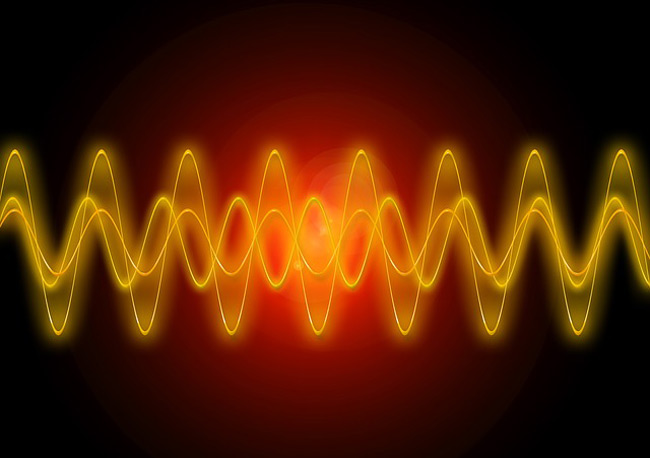
I thought I'd pen a post on this subject because I have received two enquiries on low-frequency noise (LFN) and whether the associated negative health effects can be related to binaural beats.
The short answer is no, there is no relation. I'll give the longer explanation as to why in just a moment, but first let's understand what LFN is.
Low-frequency noise is generally categorized as unwanted noise. LFN is airborne, so it travels through the air and can penetrate through windows and walls.
LFN is considered sound that fluctuates between 20 and 160 times per second (20 Hertz – 120 Hertz). An example of low-frequency noise would be a rumble or a vibration that can be heard consistently, such as that coming from a boiler or fan in your home.
Most local councils have a policy in place to investigate complaints of low-frequency noise, which can disturb residents.
This is because the main source of low-frequency noise is from public infrastructure: wind turbines, gas transmission grid, industrial plants, road and railway traffic, and sewerage.
Complaints often come from those living in proximity to railways, or industrial estates where there may be some machinery outputting a low frequency. Even if a factory or train line is some distance from a house, because low frequencies travel very far, the noise can still be heard.
Similarly, if you live near a music studio you may hear low frequencies escaping the studio and traveling into your immediate environment.
Persistent low frequency noise has been studied quite extensively and while it is generally assumed that people's health isn't greatly affected, studies have found:
Low frequency noise annoyance is related to headaches, unusual tiredness, lack of concentration, irritation, and pressure on the eardrum. Data suggest that sleep may be negatively affected. In occupational environments, low frequency noise may negatively affect performance at moderate noise levels (1).
One study in particular found:
LFN at moderate levels might adversely affect visual functions, concentration, continuous and selective attention, especially in the high-sensitive to LFN subjects (2).
LFN & Binaural Beats
So the question was put to me: Because binaural beats tend to have frequency data listed between 4 Hz to 30 Hz, does this mean it could be considered low-frequency noise and therefore potentially have a negative effect on health.
No, and here's why…
Even though when you see the frequency of a binaural beats track written as low as 4 Hz, this frequency is the perceived frequency. This means the frequency perceived by the brain.
You see, when a binaural beat is created, it is done so through the convergence of two separate frequencies. For example, you send 200 Hz to the left ear and 205 Hz to the right ear.
The brain then perceives the mathematical difference between the two and follows along by producing brainwaves at that frequency. So in this case the mathematical difference would be 5 Hz (Theta).
So the actual input frequencies are not low frequency noise per se. The resulting perceived frequency is not an input frequency; it is not the frequency you're actually hearing. So you're not actually listening to LFN.
This way binaural beats work is very unique because it is an auditory phenomenon that happens in the brain. The process happens when the auditory system is presented with two vibrations, one frequency coming from the left and one frequency coming from the right (ear channels).
Moreover, if you listen to a pure binaural beats tone, by environmental standards it wouldn't be classified as low-frequency noise. Because, despite the vibration of the frequencies, it is not at a level which would travel very far and cause any physical impact.
You need these two signals, the left and the right signal, to be very close to sites on the body where vibration can be felt, which is why we need to use headphones.
That said, raw binaural beats, just the hum/vibration of the tone, without the overlay of music, may be off-putting for some people.
This is one reason I recommend binaural beats with an overlay of relaxing music, because this makes the listening experience more pleasurable. You still get the benefits but aren't exposed to a raw tone.
LFN in Music – Generally
One should also consider that we are exposed to low frequency noise in various forms via the environment, and if you listen to music a lot you probably hear more than your fair share. Low-frequency noise usually only becomes irritating when you are consistently exposed to a specific frequency
Where high-frequency noise such as a constant ringing can be annoying and eventually cause you a headache, a low-frequency noise that is vibrating, such as the noise from a fan in your bathroom, can quickly become disconcerting and even make some people feel nauseous after constant exposure over a prolonged period of time.
When it comes to the sound frequencies generated by music, even though there is a lot of low-frequency information in a song, particularly in dance music and heavy rock music, because the exposure is over a short period of time and is delivered in a composition of frequencies that makes it appealing to the ear, we are generally not affected and actually enjoy the low frequency information.
However, if you don't like that particular type of music then you may be affected. For example, if a person who hates heavy bass music goes to a festival and is exposed to booming speakers for longer than 20 minutes, they may start to experience the side-effects associated with low frequency noise exposure.
So in a nutshell, what we're talking about here is persistent exposure to a sound frequency that is irritating.
Sound in the lower frequency range is around us all the time, but we are not always aware of it as people's sensitivity varies considerably. Problems arise when the levels of low frequency noise are such that they interfere with our everyday lives (3).
I hope this has cleared up any confusion over binaural beats and low frequency noise.



Jutta Reinke says
Hey Lawrence, thank you for this interesting article. We just moved into our new place and I already get very annoyed about the sound of our boiler which is running 24/7.
Do you know if/which specific frequency of binaural music could help to give my brain a break?
Jutta
bbfreak says
Hi Jutta, that sounds super annoying! You could try listening to some theta frequency tracks in headphones while you’re relaxing at home. Or if you’re working at home with headphones on, try some Alpha state tracks.
Some good selections here:
Theta: https://www.binauralbeatsmeditation.com/product-category/theta-waves/
Alpha: https://www.binauralbeatsmeditation.com/product-category/alpha-waves/